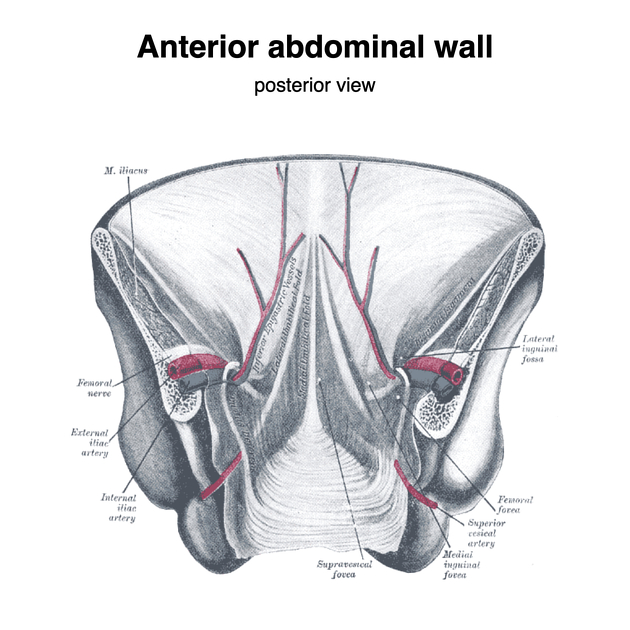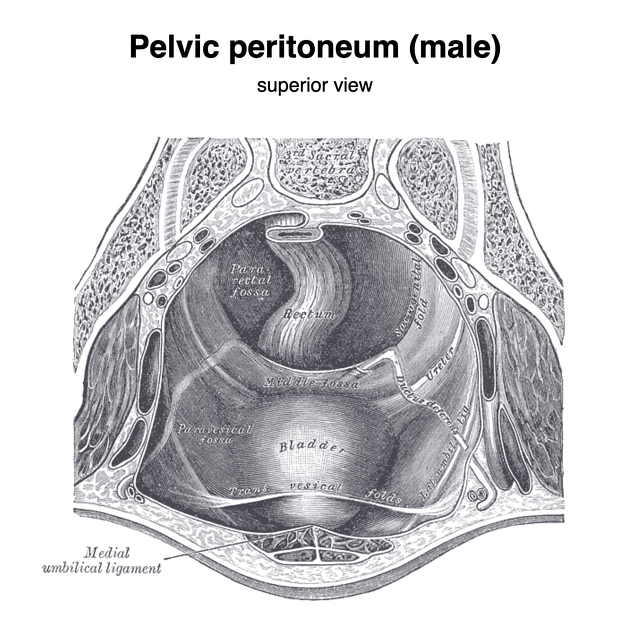Peritoneum
Citation, DOI, disclosures and article data
At the time the article was created Jeremy Jones had no recorded disclosures.
View Jeremy Jones's current disclosuresAt the time the article was last revised Craig Hacking had the following disclosures:
- Philips Australia, Paid speaker at Philips Spectral CT events (ongoing)
These were assessed during peer review and were determined to not be relevant to the changes that were made.
View Craig Hacking's current disclosures- Peritoneal cavity
- Greater sac
- Peritoneums
- Peritonea
- Peritoneal cavities
The peritoneum (rare plural: peritonea or peritoneums) is a large complex serous membrane that forms a closed sac, the peritoneal cavity, within the abdominal cavity. It is a potential space between the parietal peritoneum lining the abdominal wall and the visceral peritoneum enveloping the abdominal organs. In females, this closed sac is perforated by the lateral ends of the fallopian tubes.
Gross anatomy
The peritoneum comprises a single layer of mesothelial cells supported by connective tissue. The free surface of the peritoneum bears the mesothelial cells and is kept moist and smooth by a thin film of serous fluid. The potential peritoneal spaces, the peritoneal reflections forming peritoneal ligaments, mesenteries, and omenta, and the natural flow of peritoneal fluid determine the route of spread of intraperitoneal fluid and disease processes within the abdominal cavity.
It can be divided into two main compartments separated by the transverse mesocolon's root: the supramesocolic space above and the inframesocolic space below.
The peritoneal cavity can also be divided into a greater sac and a lesser sac, which lies posterior to the stomach. The greater sac is often used synonymously with the peritoneal cavity.
Innervation
parietal peritoneum: supplied segmentally by the spinal (intercostal and lumbar) nerves innervating the overlying muscles
diaphragmatic (parietal) peritoneum: supplied by the phrenic nerve (C3, C4, C5 roots), hence referred pain from the diaphragm is felt at the tip of the shoulder
visceral peritoneum: no afferent supply, pain from diseased viscera is due to muscular spasm, tension on mesenteric folds or involvement of the adjacent parietal peritoneum
mesenteric root: possesses numerous Pacinian corpuscles (mechanoreceptors) which serve a protective function, by causing the reflex contraction of abdominal muscles to support the abdominal viscera during jarring movements of the abdomen which may cause undue traction on associated peritoneal attachments
References
- 1. Standring S (editor). Gray's Anatomy (39th edition). Churchill Livingstone. (2011) ISBN:0443066841. Read it at Google Books - Find it at Amazon
- 2. Richard S. Snell. Clinical Anatomy. (2020) ISBN: 9780781743167
Incoming Links
- Systemic lupus erythematosus (gastrointestinal manifestations)
- Transversalis fascia
- Intercostal nerve
- Lateral fossa
- Posterior abdominal wall
- Umbilicus
- Cecum
- Umbilical artery
- Ovary
- Bucket handle mesenteric injury
- Seminal vesicle
- Pelvic peritoneal space
- Umbilical folds
- Prostatitis
- Peritoneal calcification
- Internal iliac artery
- Rectovesical pouch
- Ladd bands
- Rectouterine pouch
- Transverse colon
- Duodenojejunal fossa (Gray's illustration)
- Pelvic peritoneum (Gray's illustration)
- Bile leak demonstrating the foramen of Winslow
- Postsurgical ureter injury
- Peritoneal coverings of the duodenum
- Meckel’ s diverticulitis complicated by acute small intestinal obstruction
- Meckel’s diverticulum causing acute small intestinal obstruction
- Buried bumper syndrome
- Normal hysterosalpingography
- Sigmoid diverticulitis
- Rectum (illustrations)
- Appendicular mucocele with pseudomyxoma peritonei
- Crohns with acute exacerebation and perforation
- Hysterosalpingogram: normal
- Lanthanum in the colon
- Gas containing peritoneal collection
- Splenosis
- Obstructed Tenckhoff peritoneal dialysis catheter
- Normal hysterosalpingography
Related articles: Anatomy: Abdominopelvic
- skeleton of the abdomen and pelvis
- muscles of the abdomen and pelvis
- spaces of the abdomen and pelvis
- anterior abdominal wall
- posterior abdominal wall
- abdominal cavity
- pelvic cavity
- perineum
- abdominal and pelvic viscera
- gastrointestinal tract
- spleen
- hepatobiliary system
-
endocrine system
-
adrenal gland
- adrenal vessels
- chromaffin cells
- variants
- pancreas
- organs of Zuckerkandl
-
adrenal gland
-
urinary system
-
kidney
- renal pelvis
- renal sinus
- avascular plane of Brodel
-
variants
- number
- fusion
- location
- shape
- ureter
- urinary bladder
- urethra
- embryology
-
kidney
- male reproductive system
-
female reproductive system
- vulva
- vagina
- uterus
- adnexa
- Fallopian tubes
- ovaries
- broad ligament (mnemonic)
- variant anatomy
- embryology
- blood supply of the abdomen and pelvis
- arteries
-
abdominal aorta
- inferior phrenic artery
- celiac artery
- superior mesenteric artery
- middle suprarenal artery
- renal artery (variant anatomy)
- gonadal artery (ovarian artery | testicular artery)
- inferior mesenteric artery
- lumbar arteries
- median sacral artery
-
common iliac artery
- external iliac artery
-
internal iliac artery (mnemonic)
- anterior division
- umbilical artery
- superior vesical artery
- obturator artery
- vaginal artery
- inferior vesical artery
- uterine artery
- middle rectal artery
-
internal pudendal artery
- inferior rectal artery
-
perineal artery
- posterior scrotal artery
- transverse perineal artery
- artery to the bulb
- deep artery of the penis/clitoris
- dorsal artery of the penis/clitoris
- inferior gluteal artery
- posterior division (mnemonic)
- variant anatomy
- anterior division
-
abdominal aorta
- portal venous system
- veins
- anastomoses
- arterioarterial anastomoses
- portal-systemic venous collateral pathways
- watershed areas
- arteries
- lymphatics
- innervation of the abdomen and pelvis
- thoracic splanchnic nerves
- lumbar plexus
-
sacral plexus
- lumbosacral trunk
- sciatic nerve
- superior gluteal nerve
- inferior gluteal nerve
- nerve to piriformis
- perforating cutaneous nerve
- posterior femoral cutaneous nerve
- parasympathetic pelvic splanchnic nerves
- pudendal nerve
- nerve to quadratus femoris and inferior gemellus muscles
- nerve to internal obturator and superior gemellus muscles
- autonomic ganglia and plexuses









 Unable to process the form. Check for errors and try again.
Unable to process the form. Check for errors and try again.